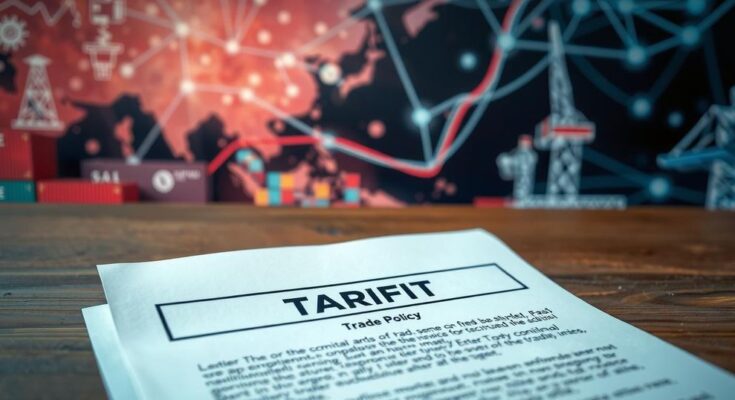India has reduced import tariffs on motorcycles to foster US trade and counter Trump’s tariff threats. Trump has pressured India for a trade balance and heightened defense purchases. Despite past criticisms, India’s import adjustments could facilitate US exports, while experts point to potential challenges in agricultural negotiations. India’s historical trade evolution reflects a shift from protectionism toward engagement in global trade, with strategic ties to the US likely influencing future interactions.
India has taken steps to lower import duties on motorcycles, reducing tariffs on heavyweight bikes over 1,600cc from 50% to 30%, and on smaller motorcycles from 50% to 40%. This preemptive measure aims to facilitate Harley Davidson’s entry into the Indian market while also seeking to mitigate potential US tariff threats. Notably, US motorcycle exports to India were valued at $3 million last year.
Following Donald Trump’s return to the White House, tensions have escalated as he has targeted trade measures against both allies and rivals, including India. Ajay Srivastava of the Global Trade Research Institute highlighted the precarious position India finds itself in, especially since Trump has already imposed tariffs on countries such as Canada and Mexico.
During a recent conversation, Trump urged Indian Prime Minister Narendra Modi to increase defense purchases from the US, calling for a more equitable trade relationship. Trump has consistently criticized India’s tariffs, particularly the previous 100% tax on Harley motorcycles, which he deemed “unacceptable,” and has previously labeled India a “tariff king.”
India currently retains a trade surplus with the United States, its largest trading partner, with bilateral trade surpassing $190 billion this year. Since 2018, merchandise exports to the US increased by 40% to $123 billion, while service exports grew by 22% to $66 billion, contrasting with US exports to India, which total $70 billion.
Apart from motorcycles, India has eliminated tariffs on satellite ground installations and reduced duties on synthetic flavoring essences and fish hydrolysate. These changes aim to benefit US exporters and enhance trade relations while India still imports vital goods like crude oil and medical devices from the US.
Mr. Srivastava believes that India’s latest tariff reductions could facilitate increased US exports across multiple sectors despite ongoing trade tensions. He noted, “While Trump has criticized India’s tariff policies, the latest reductions signal a policy shift that could enhance US exports across various sectors.”
Historically, India was characterized by heavy protectionist policies, with tariffs peaking at 80% in 1990. Since opening its market in the 1990s, tariffs decreased significantly, but recent initiatives under Modi’s “Make in India” campaign have seen an increase to around 18%, higher than many other Asian nations.
Trade expert Biswajit Dhar warns that India may become increasingly ensnared in Trump’s “America First” economic policy, particularly regarding agricultural concessions. While India reduced some tariffs on US goods in 2023, Dhar anticipates possible difficulties in negotiating further concessions due to the domestic political implications surrounding agriculture.
Furthermore, India’s strategic alliance with the US and its active role as a Quad member could mitigate tensions. Observers emphasize Modi’s productive rapport with Trump, suggesting that constructive discussions may unfold during Modi’s anticipated visit to the White House later this month.
This article discusses the implications of India’s recent tariff reductions on motorcycles and other imports in the context of growing trade tensions with the United States under President Donald Trump. The focus is on how India’s trade policies may influence its relationship with the US, especially amid Trump’s past criticisms regarding India’s tariffs. It also provides a historical perspective on India’s trade practices, highlighting the evolution from protectionism to a more liberalized trade approach.
In conclusion, India’s recent tariff reductions signify a strategic move to enhance trade relations with the United States amidst Donald Trump’s contentious trade measures. By adjusting import duties, India aims to secure its economic interests while navigating potential pressures from the US regarding trade balance and tariff policies. The outcome of ongoing discussions between Modi and Trump may further shape the future of India-US trade dynamics and mutual cooperation.
Original Source: www.bbc.com




